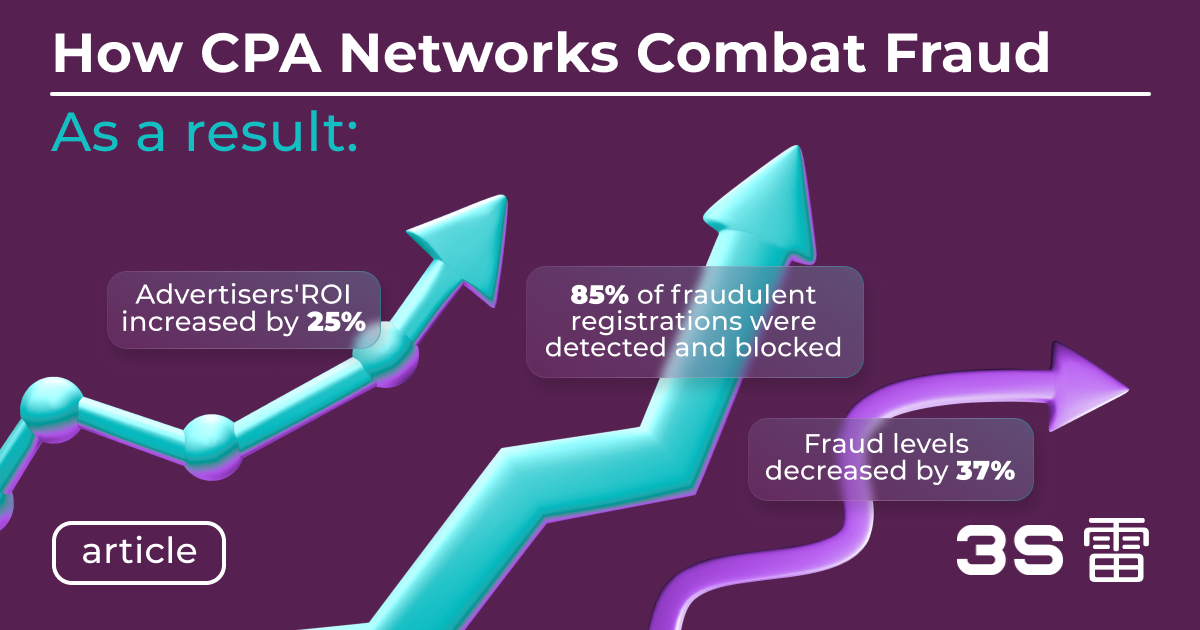Online advertising fraud is evolving rapidly. Without effective solutions, companies risk losing not only their budgets but also the trust of their partners. In this article, we will explain why anti-fraud solutions are crucial for maintaining high-quality traffic in CPA networks and the role of fingerprinting in fraud prevention.
The Evolution of Fraud Tactics
Fraud in advertising traffic is constantly evolving to bypass new protection technologies. Today, the most common fraud schemes include automated scripts generating fake traffic (crawlers), data spoofing (such as falsifying the User-Agent and geolocation), and the use of bots to simulate real user behavior (automated fraud). Additionally, issues like incorrect or duplicate requests, traffic from IP addresses with a bad reputation, and attempts to bypass security measures through obfuscated signals (blocked hints) are frequently encountered.
Fraud continues to evolve, and its scale will only grow in 2025. Fraudsters are leveraging machine learning, advanced browser emulators, and VPNs to make their bots appear as real users. This significantly complicates fraud prevention and demands more sophisticated filtering tools.
How CPA Networks Combat Fraud
A Real Case Study
Let’s take an example from our work with one of our partners. We identified a high percentage of bot traffic that was negatively impacting offers. To address this issue, we conducted real-time behavioral analysis, filtered suspicious IP addresses and unnatural click patterns, and implemented intelligent pre-bid filtering algorithms.
As a result:
- Fraud levels decreased by 37%.
- Advertisers' ROI increased by 25%.
- 85% of fraudulent registrations were detected and blocked.
This significantly reduced wasted spend on ineffective impressions and clicks.
Key Challenges for CPA Networks
From industry research and partner interviews, we identified the major challenges CPA networks face:
- High fraud levels reduce network trust, lower ROI, and require strong protection mechanisms.
- Advertisers lose significant portions of their budgets due to fraudulent traffic, leading to stricter KPIs, hold periods, and lower CPA rates.
- These issues decrease CPA networks' revenue and put their reputation at risk.
How Fraud Affects CPA Networks' Revenue
Bot traffic isn’t just wasted budget—it distorts analytics, reduces conversions, and damages reputations. Fraud-related losses can account for 20–30% of an advertiser’s annual budget. Without effective protection, CPA networks struggle to scale and secure deals with top-tier advertisers.
High-Risk Verticals for Fraud
Fraud is most prevalent in gambling and betting, where high payouts attract scammers. In dating, fake profiles and bot-driven interactions are common, while crypto faces additional risks due to anonymous transactions and complex verification processes.
What Happens If You Don't Use Traffic Segmentation?
A mixed traffic flow without proper filtering includes bots and low-value audiences, which reduces overall ROI and drains the advertising budget. Traffic segmentation helps eliminate fraudulent sources, enhance transparency in partnerships, and maximize conversions.
The Role of Fingerprinting in Traffic Filtering for CPA Networks
Fingerprinting, in simple terms, is a feature that helps CPA networks distinguish real users from bots and fraudsters. It collects various device and browser data, including IP address, device model, operating system version, installed plugins, and even mouse movement patterns. This information forms a unique "fingerprint" for each user, which is difficult to fake or alter.
Why is this important? Fraudsters often use VPNs, emulators, or cookie manipulation to appear as new users and earn payouts for fake registrations. Fingerprinting enables CPA networks to detect these "disguised" users, block duplicate registrations, and protect advertisers from budget drain caused by invalid traffic. This is especially crucial for gambling and betting verticals, where fraud risks are particularly high.
How CPA Networks Can Proactively Fight Fraud
To stay ahead, CPA networks must implement pre-bid filtering, analyze traffic in-depth, and partner only with trusted sources. Fraud is evolving, and networks need to constantly upgrade their fraud prevention strategies to maintain advertiser trust and ensure long-term profitability.
A Fraud-Free CPA Network: 3SNET Case
According to industry surveys, the CPA network 3SNET is among those whose traffic is free from bot activity and delivers high conversion rates. Thanks to advanced technologies and effective filtering and monitoring mechanisms, their traffic remains clean and highly converting.
This means that advertisers receive only real users, and their budgets are protected from unnecessary spending.
As a result of working with 3SNET, advertisers get clean, transparent, and high-quality traffic that drives real conversions and profits. That is why 3SNET has rightfully earned the trust of major brands and maintains a leading position in the market.
Bonus from 3SNET
Get a +5% bump from 3SNET on a one-time payment of $1,000 for new clients using promo code 3SClick.
Conclusion
Anti-fraud technologies in CPA networks are not optional—they are essential. When choosing a CPA network, advertisers should prioritize strong fraud prevention tools. Work only with trusted partners whose traffic won’t harm your budget or reputation.
Read the article from our partner 3SNET: HOW TO MINIMIZE AD LOSSES IN MEDIA BUYING: ANTI-FRAUD SOLUTIONS AND ANALYTICS IN 2025

